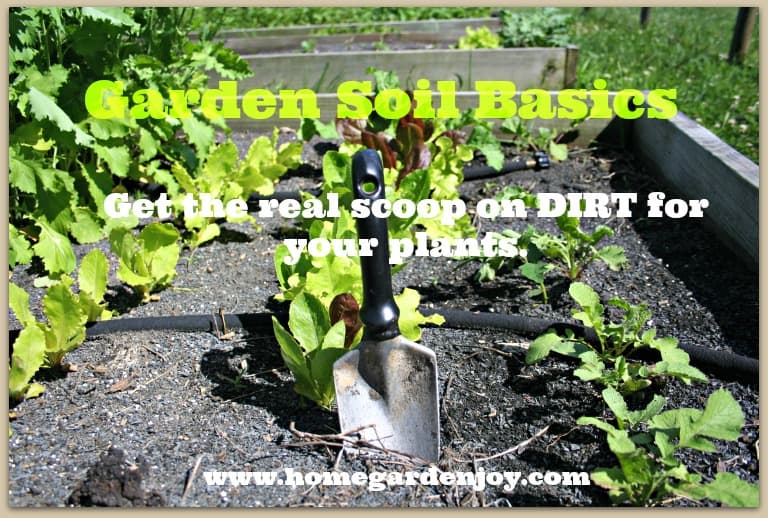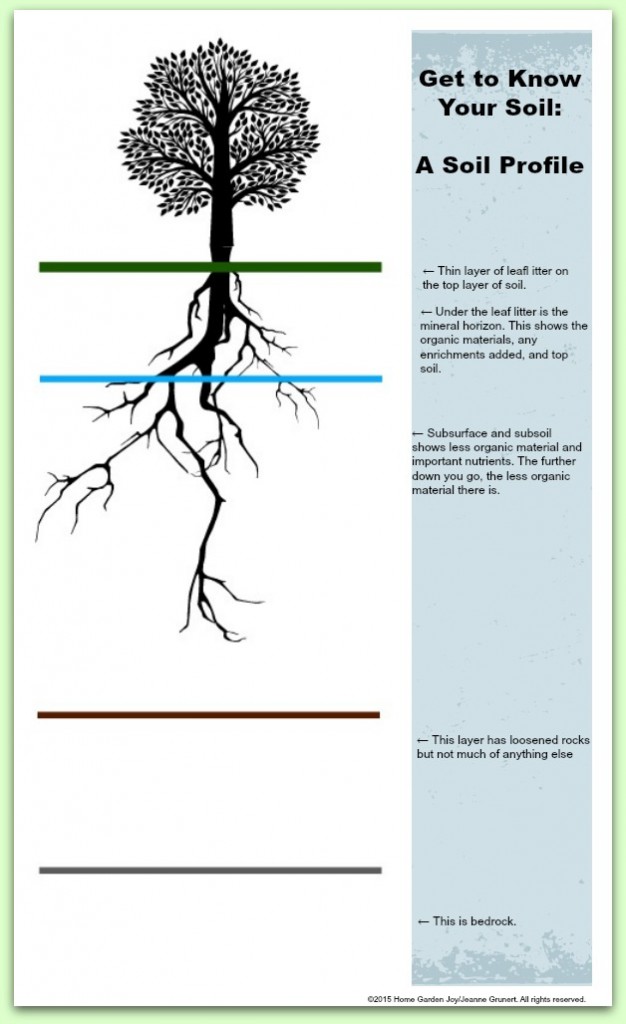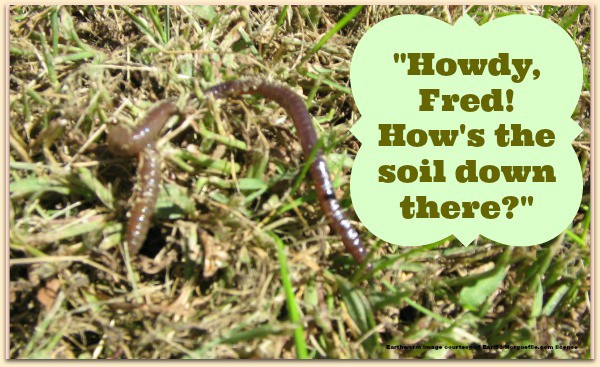 Soil is really a miracle. Think about it for a minute. Millions of years ago, the Earth was just a giant ball of rock. Now it teems with life. As the waters receded, the action of winds, rain and time broke massive rocks into tiny particles. Soil. Plants grew, died, decayed. A few inches of precious leaf material resulted that eventually grew massive forests. If that’s not a miracle, I don’t know what is.
Soil is really a miracle. Think about it for a minute. Millions of years ago, the Earth was just a giant ball of rock. Now it teems with life. As the waters receded, the action of winds, rain and time broke massive rocks into tiny particles. Soil. Plants grew, died, decayed. A few inches of precious leaf material resulted that eventually grew massive forests. If that’s not a miracle, I don’t know what is.
Yet most of us take soil for granted.
This week, I’d like to talk about garden soil basics. These garden soil basics will help you understand what’s going on underground, that is, what your plants are experiencing underground. If you don’t get to know your soil, you won’t understand what’s going on with your plants.
I’m dishing the dirt on soil. Talking dirty to you. Ready to get your hands dirty and look deep underground? Take a trip with me down, down, down….down into the ground to peer into the depths of your garden soil. These garden soil basics will make you look at dirt differently.
Garden Soil Basics
Soil is solid, right? Wrong! Good soil is actually composed of about half…air! Doesn’t the sound crazy?
According to the Virginia Cooperative Extension manual on my desk, soil is composed of approximately 50% solid material and 50% open pore space. Open pore space allows water and water-soluble nutrients to flow through the soil and to reach a plant’s roots.
Before we plunge our hands into the ground to get to know our soil, it might be helpful to look at a cross-section picture called a soil profile. I created this one based on my Master Gardener training materials.
Soil is composed of several layers. The top layers are the most fragile, and can easily be destroyed by mishandling. They are also the layers that are the most vital for plant growth, development and health, and the layers you will most easily see with the naked eye as you garden.
Soil generally contains four layers:
- The top layer of leaf litter. This layer is made up of decomposing leaves and other plant material. Directly underneath the top most layer of leaf litter is the surface soil or topsoil. When gardeners speak of their soil as clay or sandy or loam, they are most likely referring to the surface soil or top soil.
- Underneath the top soil is the subsoil layer. The dirt here may be finer than the topsoil; it may be a different color. There’s usually very little organic material in the subsoil. But you will see pretty colors – bands of red, yellow and rich brown. These bands contain mineral-rich soil that supports the top layers and acts as a water reservoir, storing excess water and nutrients for plants. It also helps regulate the soil temperature and provides air for plants, another reason why that empty pore space is so important.
- Underneath all of this is the parent material (layer 3) with bedrock (layer 4) below it. The parent layer may be loosened by digging or tree roots or simply hard. It’s not rock hard like the bedrock underneath, but you may need a pickax or backhoe to dig deeply into this layer. The parent material influences the soil texture above as well as the rate that the leaves decompose.
What Do Your Plants Care About?
Your plants care about the top layers, and sometimes these lower layers of soil. Grass, for instance, needs rich soil near the top, down to a depth of about six inches. Its roots don’t extend any deeper than that, so if you’re trying to grow a lush, green lawn, you will probably concentrate your efforts on adding nutrients to the topmost layers of the lawn. Conversely, your trees care deeply about the lower layers of soil; their roots spread horizontally as well as vertically, with the tap-root of the tree extending a few feet down into the soil and a massive web of feeder roots spreading out in various directions to maximize its ability to take in nutrients and hold fast to the earth. The exact depth of a tree’s roots vary according to the species, the soil, and the ultimate height and age of the tree, according to the International Society of Arborists and the Colorado Cooperative Extension office. If you have ever seen a large tree toppled by a storm, you’ll know exactly what this looks like; most great ‘grandfather’ trees rip up the surrounding ground when they eventually tumble to the ground.
Life in Your Soil
Soil isn’t just composed of dead plants and rocks. It teems with life. Insects rummage through the surface layers, chomping on bits and pieces of decomposing leaves. Worms are the best chompers of all, voraciously eating their way through the ‘garbage’ of the forests, pooping out lovely castings that contains wonderful nutrients to feed plants.
Microorganisms including bacteria and fungi also colonize the soil, providing useful services that break down plant material into carbon, nitrogen and other elements that feed plants and nurture the soil.
As you can see, what meets the eye doesn’t begin to explore the wonders occurring beneath the surface of the soil. What seems like, well, just the ground, just dirt, is actually a complete microcosm. It’s got its own rules and regulations, its own garbage men and police force, and its own helpers and fighters.
Tomorrow, we’ll take another peek into the wonders of garden soil. Have a great day and keep growing!








Very informative! Every year I promise myself I am going to start taking better care of my plants, and now I have starting place since the soil is the life of all the plants. Thanks so much for sharing.
Who knew? Certainly not me. Dirt is dirt.. I guess not. I know there is alot more to know. Thanks for the education.
We have been composting and nourishing our dirt for many years. Our property is mostly sand which doesn’t have all the proper nutrients for the plants we have selected. Good to know we are on the right track with feeding our much loved flowers, trees and shrubs.
Thank you for this, Jeanne! I am planning my spring garden as we speak, and this is helpful info!
This is awesome information. We are actually battling our soil now. It is almost all clay and horrible for growing a garden. We are doing everything w can think of to revitalize our soil. Thanks for these tips.
~Lorelai
Life With Lorelai
Lorelai, we deal with heavy clay – we joke we can make bricks out of it. We mixed tons of compost and horse manure acquired free from a local stable into the flower beds, and for the vegetables, we built the raised beds. It really helps. Good luck and ask me any questions you like!